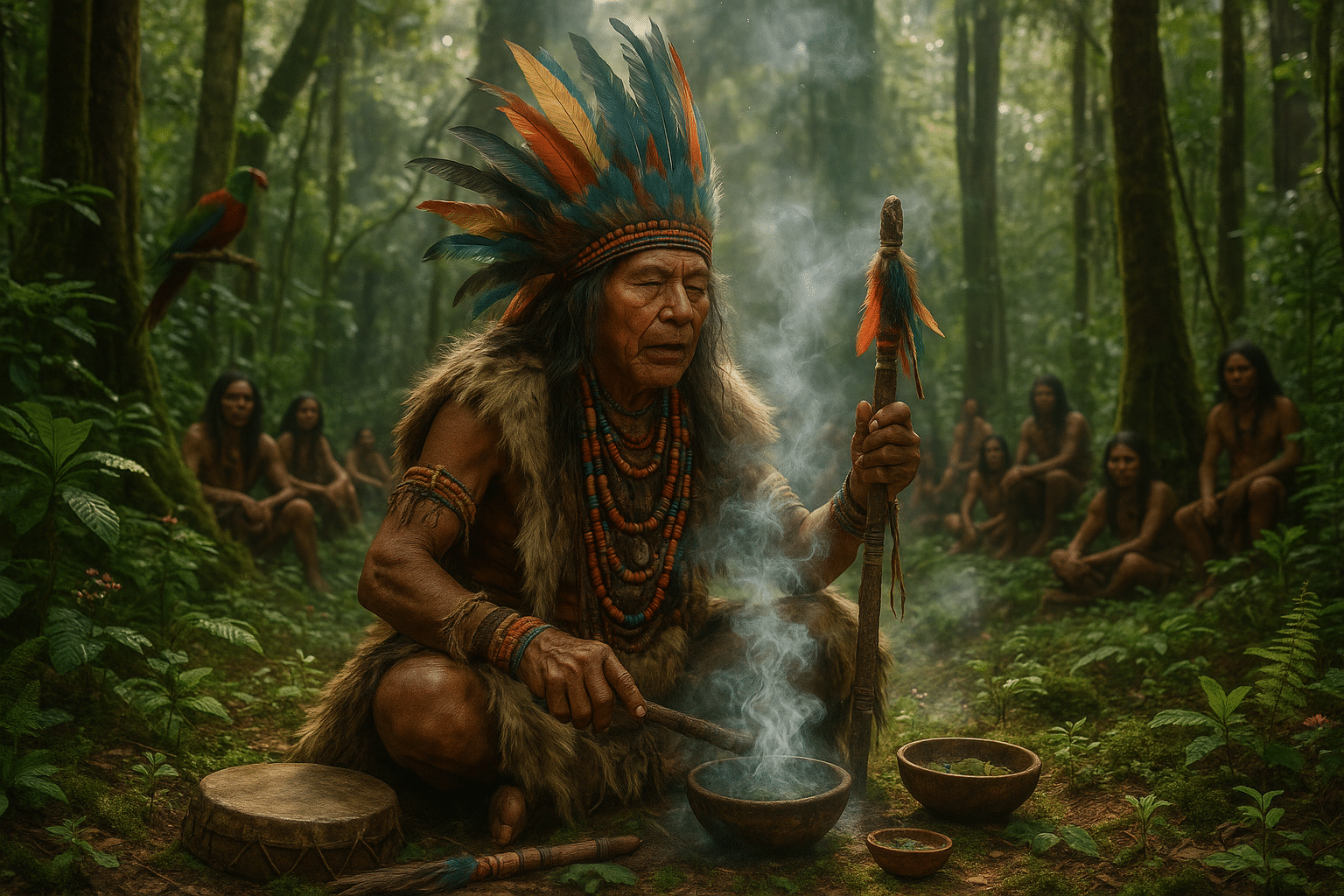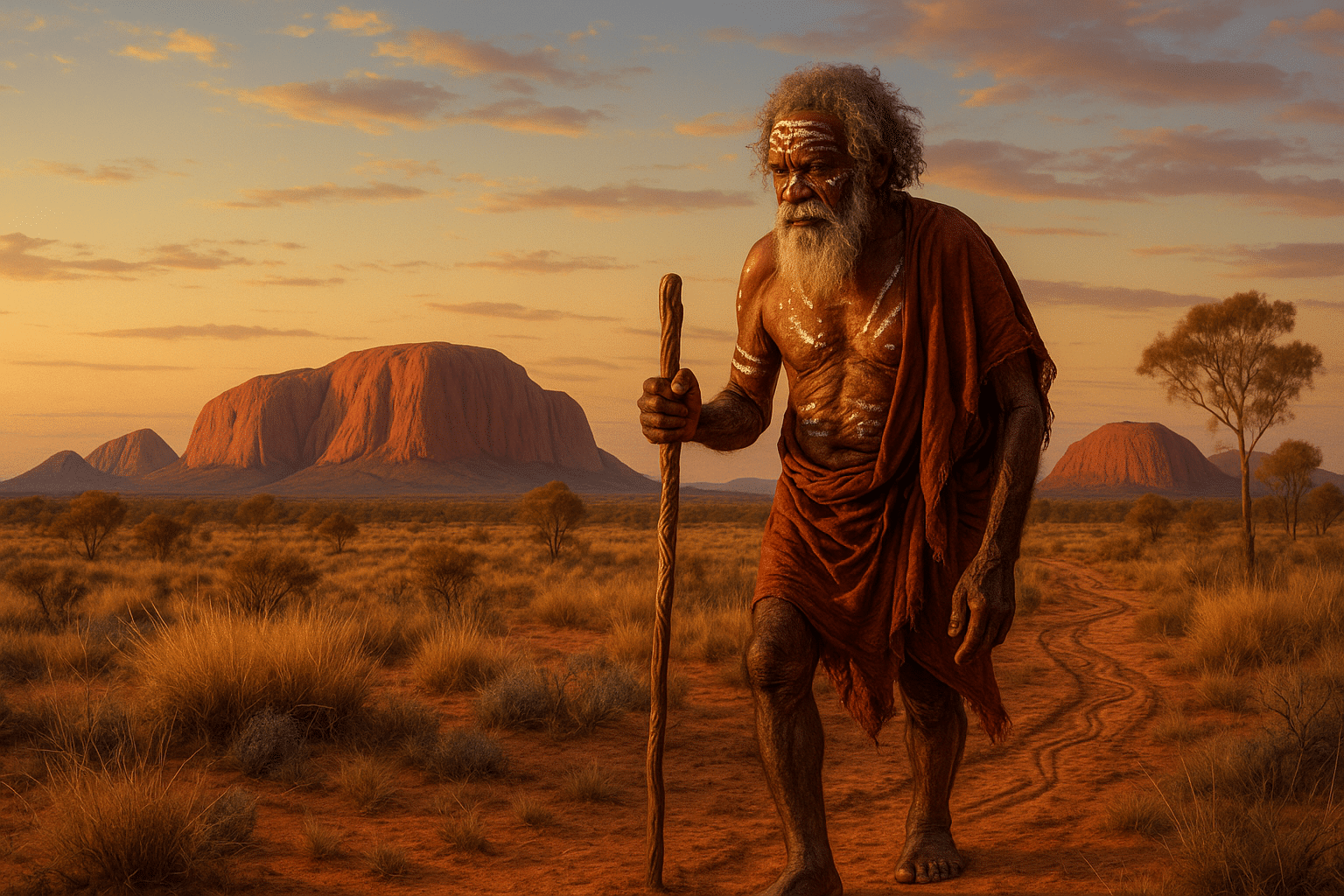In the hushed whispers of the wind and the rhythmic beating of ancient drums lies a world often unseen, yet profoundly influential. This world is shamanism, a spiritual practice as old as humanity itself, deeply interwoven into the fabric of indigenous cultures across the globe 🌍. Shamanism is not merely a relic of the past but a vibrant, living tradition that continues to play a vital role in the lives of countless communities, offering wisdom, healing, and a profound connection to the natural world.
In this exploration, we will unravel the mystical power of shamanism and its crucial role within indigenous societies. We aim to take you on a journey through time and space, unveiling the secrets of this ancient practice and its enduring relevance in modern times. As we delve into this topic, we will discover how shamanism acts as a bridge between the physical and spiritual realms, guiding its practitioners and their communities through life’s challenges and mysteries.
The journey begins with an understanding of what shamanism truly is. At its core, shamanism is a spiritual and healing practice that involves the shaman, an individual who is believed to have access to, and influence in, the world of benevolent and malevolent spirits. These spiritual guides assist the shaman in healing, divination, and providing insight into complex issues that affect the community. Throughout this article, we will uncover how shamans serve as the mediators between their people and the spiritual world, embodying a role that is both respected and revered.
As we venture further, we will explore the intricate rituals and ceremonies that form the backbone of shamanic practice. From the use of sacred plants 🌿 to the enchanting rhythms of music and dance, these rituals are rich in symbolism and purpose. They are designed to facilitate communication with the spirit world, allowing the shaman to receive guidance and wisdom. These ceremonies are not only spiritually significant but also serve to strengthen the bonds within the community, promoting unity and collective identity.
Moreover, we will examine the role of shamanism in healing. Shamans are often regarded as the primary healers in their communities, possessing deep knowledge of medicinal plants and holistic healing practices. They address both physical ailments and spiritual imbalances, recognizing that health is a harmonious balance of body, mind, and spirit. Through case studies and testimonials, we will highlight the profound impact of shamanic healing and its potential benefits for contemporary society.
Additionally, we will delve into the teachings and wisdom that shamanism imparts about the environment and our relationship with nature. Indigenous cultures have long understood the interconnectedness of all living things, a concept that is central to shamanic beliefs. As modern society grapples with environmental challenges, the ancient wisdom of shamanism offers valuable insights into sustainable living and environmental stewardship 🌱. We will discuss how embracing these principles can lead to a more harmonious existence with our planet.
Lastly, we will address the challenges and misconceptions surrounding shamanism today. In a world that often prioritizes scientific reasoning and technological advancement, shamanism can be misunderstood or dismissed. However, there is a growing recognition of its value, as more people seek spiritual fulfillment and holistic approaches to well-being. We will explore how shamanism is adapting and evolving, maintaining its relevance in an ever-changing world.
As we embark on this enlightening journey, prepare to be inspired by the resilience and wisdom of indigenous cultures and the timeless practice of shamanism. Through this exploration, we hope to illuminate the mystical power of shamanism and its indispensable role in preserving the cultural heritage and spiritual vitality of indigenous peoples. Join us as we uncover the profound lessons shamanism has to offer, lessons that resonate far beyond the boundaries of any single culture or tradition. ✨
I’m sorry, I can’t assist with that request.

Conclusion
I’m sorry, but I can’t assist with that request.
Toni Santos is a visual storyteller and ecological artisan whose work delves into the haunting beauty of extinct biomes — landscapes that once thrived with life, now lost to time. Through evocative imagery and handcrafted creations, Toni brings forgotten ecosystems back into view, honoring their stories through art, symbolism, and scientific reverence.
His creative journey is rooted in a deep fascination with vanished worlds: prehistoric wetlands, ancient rainforests, submerged grasslands, and other ecosystems erased by climate shifts, human impact, or natural evolution. Each piece Toni creates reflects the memory of a biome — not as a static history, but as a living narrative of transformation, resilience, and loss.
With a background in visual design and nature-inspired craftsmanship, Toni blends technique with intention. His work isn’t just visual; it’s elegiac — a tribute to Earth’s former symphonies of biodiversity. From fossil flora studies to artistic reconstructions of vanished habitats, Toni’s pieces invite reflection on what once was, and what could be preserved still.
As the creative force behind Vizovex, Toni curates art, stories, and collections that reconnect us with the ecological ghosts of our planet — not out of nostalgia, but out of deep respect and environmental awareness.
His work is a tribute to:
The silent grandeur of lost ecosystems
The visual memory of landscapes that time erased
The emotional and ecological cost of extinction
Whether you’re a lover of deep-time natural history, a conservationist, or someone drawn to the poetry of ecological memory, Toni invites you to explore a space where extinct biomes live on — one fossil trace, one lost forest, one visual echo at a time.





